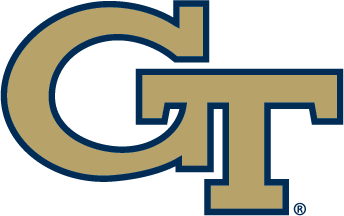July 14, 2015
This is Part 1 of a three-part series with Steve Raible, who is the play-by-play radio voice of the Seattle Seahawks. RamblinWreck.com’s Matt Winkeljohn sat down with Raible during a recent trip to Seattle.
By Matt Winkeljohn
The Good Word
SEATTLE — Sometimes, a quick glance back that started with the thought, “how did this happen?” turns into a study that opens a vault of history that answers the question. Take a little time, and you’ll see how Steve Raible keeps going deep 40 years after playing for Georgia Tech to become a Hall of Fame broadcaster.
The former tight end/sprinter authored modest numbers for the Yellow Jackets from 1972-75 under run-oriented head coaches Bill Fulcher and Pepper Rodgers, yet with 24 career receptions, 452 receiving yards and five touchdowns he was inducted into Tech’s Athletic Hall of Fame in 2004.
So how’d that happen? How did an industrial management graduate come to be featured earlier this year by NFL Films?
The cover of Raible’s book barely begins to tell his story. He was tabbed for Tech’s Hall for what he did on The Flats, where in 1975 he earned honorable mention All-America and first-team All-Southern Independent honors, and for what he’s done on and off NFL fields since.
The tales of his time in Seattle — where he has been involved in every one of the Seahawks’ 40 years as a player and radio broadcaster while carving out legendary status in the community through charitable works — cannot be quickly told.
Earlier this year, the high-end arm of the league, NFL Films, featured a smooth-talking Louisville, Ky., native who has more than football to chat about.
Sitting at his KIRO 7 desk in downtown Seattle, not far from the famed Space Needle and a few blocks from views of the Olympic Mountains to the northwest and massive Mt. Rainier to the southeast, the local TV news anchor recently leaned back while wearing a Tech “Letterman’s Club” shirt, and began to rewind.
Raible didn’t plan to settle so far from his old, Kentucky home, nor become such a dynamic figure in one of America’s fastest growing cities.
His transition from 6-foot-2 tight end at Tech to NFL wide receiver was more predictable than all of that, especially since he was timed in 4.35 seconds over the 40-yard dash while in college.
After catching four passes for 126 yards and a touchdown as a rookie in 1976, he went home to Louisville and then spent time with former Tech teammates. There was no view yet of real future.
“Some of my buddies were fifth-year seniors. I hung out for a while in Atlanta, and my coach out here, Jack Patera, wanted me back out by March,” Raible recalled. “Once we started working out, in those days you got a job in the offseason. I made $27,000 my first year and I was a second-round draft choice.
“The first year I was a bar tender and bar manager, and helped a guy build a restaurant — literally, hammer and nails. I’d work out in the morning, go work with him all afternoon and tend bar in the evenings.”
And in the second offseason, “I worked for a year in the construction industry. I’d go to companies and tell them to put guys in the next seminar on cost managing, cost estimating, time management. That was closer to my industrial management roots. I thought that might be something I’d do.”
Before all the dots of his present life began to connect, Raible’s first inklings came on The Flats. He met legendary newscaster David Brinkley as a junior, and spent key time with iconic Tech broadcasters Al Ciraldo and Kim King.
“I remember being hurt one game and sitting up in the press box and watching them, and that was something I will always remember,” he said. “I remember watching them thinking, ‘Wow this is great; this back and forth, this teamwork and how — especially on radio — everything is based on your description.’ “
Raible nonetheless did not consciously fashion a broadcasting career for himself.
Yet after being drafted by Seattle in 1976 and playing six seasons for the NFL expansion team, he’s been on their radio crew since.
Even as a part-time player – starting seven games and playing in 84 while catching 68 passes for 1,017 yards and three scores in the NFL – Raible became a go-to for the media. He nearly always had something to say, and eloquently.
“After games . . . we weren’t very good the first few years of the franchise, and I was a guy who always had a quote so when we got beat again and again people would always come to me,” he said. “I got to know a lot of the writers in town.
“I also got to know the guy who was the play-by-play announcer, a guy named Pete Gross – the original [radio] voice of the Seahawks. He worked out of this building when it was KIRO TV and radio.”
With assists from Gross and his TV counterpart, Wayne Cody, the seed for a career beyond playing was sown in Raible’s third offseason.
“I would co-host radio shows,” he said. “As time went on, Wayne went from TV to radio and anchored a show three hours and night and four hours on Saturdays. One time, he said, ‘How would you like to host for a week? I’m taking vacation.’ So I did. What a great training ground . . . and I thought, ‘I really like this.’ “
Raible enjoyed moonlighting on the air, but the Seahawks did not allow players to work during seasons so he was a part-time broadcaster in every sense.
His ultimate career change came as a surprise.
“In my sixth season I got a collapsed lung in the preseason and missed four games. In the last game, I tore ligaments in my ankle so I spent two months in a walking boot,” he said. “My sixth year was not the best, but I had a contract and I was prepared to play, came back and worked out and all that.
“Early June, right before my seventh season, Pete Gross called my house and told my wife as I was playing a charity golf tournament in Spokane, ‘Hey, we’ve got some openings at KIRO if Steve is interested. Our analyst for Seahawks is leaving and we think he could do it.”
That was not an easy decision. Gross and Cody became recruiters to rival former Tech assistant Jerry Glanville, who 10 years earlier pulled Raible out of Louisville.
Raible told the Seattle Times, “The gist of the conversation was, ‘Steve is never going to be a Pro Bowler. He’s always going to have [fellow wide receiver Steve] Largent in front of him’ . . . Wayne almost strangled me when I told him I had to think about it.
“I talked to my position coach, Rusty Tillman. He said, ‘Rabes, I think you could still play. However, after all the years I gave the Redskins, one day they cut me. To this day I wish I made the decision to retire for myself.’ That made a lot of sense. So, I retired at the end of June and at the end of July I was working at KIRO.”
Raible joined Gross on the Seahawks’ radio crew as a color analyst in 1982, and became the play-by-play man in 2004 with Warren Moon as analyst.
On the TV side, he grew from part-time sports to sports and news to anchor. Even with five regional Emmys, including two as top anchor, Raible is as famed in the Pacific Northwest for his charity work as he is broadcasting.
For years he and his wife ran a ranch for rescued animals, and he has given time to Big Brothers/Big Sisters, the Children’s Home Society of Washington, the Fred Hutchinson Cancer Research Center, The Lupus Foundation and several other Seattle-area non-profit organizations.
Raible has twice received the United Way Community Service Award, and in 2001, the NCAA made him a Silver Anniversary Award honoree for his collegiate athletic fetes and professional accomplishments — including contributions to charitable and civic activities — over 25 years since his playing days at Tech.
The broadcasting seed has grown into a grand life.
Playing for the Seahawks gave Raible a foothold in Seattle, and led him to drop anchor for good.
“We were the first [major pro] team so we had an entrée that a lot of people on a lot of teams didn’t,” he said. “We stunk it up good. We went 2-12, but the city was crazy about us so every time we had opportunities to go out and do things for charity . . . if I did one I did 1,000 luncheons, rotaries, Cub Scout things.
“All of that worked in my favor because you develop self confidence about getting in front of audiences. Pretty soon, it went from Cub Scouts to corporate lunch meetings for Boeing in front of a higher-end crowd. They’re getting to know you. That made sense when I started doing radio and television. That’s when it starting making sense to stay. I was making my bones here.”
Raible’s transition to play-by-play was no more awkward than moving from tight end at Tech, where he was trumpeted by media and scouts as a fine blocker for what were the top two rushing teams in school history, to NFL wide receiver.
“I think [having played] helps me a lot because I understand what’s going on out there. I know what that feels like. When I watched Steve Largent get knocked out in a game in the late 1980s, I knew exactly what he was going through. I could see through binoculars tears running down his face.
“When you get knocked unconscious, it triggers an emotional wave in your brain and you can’t do anything. I did the same thing. I remember standing in the locker room, tears running down my face, and we’d just beaten Oakland so everybody thought I was happy about that. Nope. I didn’t know what the hell was going on.”
Raible knows now.
He’s supremely level on the news, and has covered events far and wide in addition to the Olympics.
His football calls stand out.
Whether he’s belting out a, “Holy Catfish!” or marveling aloud over another touchdown run by Marshawn “Beast Mode” Lynch, Raible is distinct and he clearly favors his adopted home town. He has a two-year-old Super Bowl ring.
“I get letters that say, ‘I’m blind and I listen to you guys on Sunday and you paint the picture,’” he said. “When people react, that’s really important to me. I get the other ones too – ‘You suck! You’re a homer!’
“Hey, I want the team to win, but if they’re not playing well, and they’re getting their asses handed to them, I’ll say that. I always said I was not good enough to say that somebody else is not good so I will never say that he’s a bad football player. I will say that he’s having a pretty rough day.”









